The Salem Witch Trials – Bridget Bishop
Who was Bridget Bishop? Unfortunately, today she’s mostly relegated to the realm of familiar names connected to The Salem Witch Trials, but few know her story. Today, I’d like to change all that. What follows is an in-depth exploration of Bridget Bishop from birth to her ultimate untimely death as the first victim in The Salem Witch Trials.
Read below for quick highlights from the article. Selecting these links will guide you to specific parts of Bridget Bishop’s life. Or scroll down to read the entire article/watch the entire video below.
Quick Highlights from Bridget Bishops Life:
How old was Bridget Bishop when she died?
Bridget Bishop was 60 years old when she died
Bridget Bishop’s Ghost
Bridget Bishop’s ghost has reportedly been haunting the area around Turner’s Seafood and the Hawthorne Hotel for decades. Both sites are adjacent to where her apple orchard would have been located.
How did Bridget Bishop die?
Bridget Bishop was hanged by the neck until she died. It is likely her neck did not break and she suffocated to death. She was the first to be killed in The Salem Witch Trials.
How many times has Bridget Bishop been married?
Bridget Bishop was married three times. The first was to Samuel Wasselbe in 1660. He died in 1664, likely due to complications from the couples’ voyage from England to America. Bridget married Thomas Oliver in 1666. He passed in 1679 in his late 70’s. In 1685, Bridget married a prosperous sawyer named Edward Bishop. They remained married until her death in 1692. Jump to First, Second, and Third marriage here.
When was Bridget Bishop born?
Bridget was born around 1632 in Norwich, England.
Who accused Bridget Bishop of witchcraft?
Throughout her life, Bridget was accused of witchcraft and thievery by many people. The accusations that led to her death were made by Mercy Lewis and Ann Putnam.
Why was Bridget Bishop accused of witchcraft
For many years leading up to The Salem Witch Trials, Bridget had been accused of witchcraft and thievery. Similar to others like Sarah Good and Tituba, Bridget was likely accused because her social status and reputation made imprisonment and execution much more likely. In this way, her accusation and arrest provided kindling for the proliferation of later accusations which reached higher up the socioeconomic hierarchies in Salem and the surrounding areas.
Did Bridget Bishop have kids?
Yes. A number of her children by her first two husbands did not survive infancy. Her final child, a girl named Christian Oliver, with her second husband did survive and lived into adulthood.
Yes. A number of her children by her first two husbands did not survive infancy. Her final child, a girl named Christian Oliver, with her second husband did survive and lived into adulthood.
Coming to America
Bridget Playfer was born around 1632 in Norwich, England. While her early life is shrouded in some degree of mystery, we do know that by Spring 1660, at the age of 28, Bridget was married to a Captain Samuel Wasselbe at St. Mary in the Marsh in Norwich. Bridget had a boy with Samuel that the couple named Benjamin. Sadly, Benjamin, like so many newborns of the age, died in infancy. Perhaps it was the heartbreak of losing her first child that spurred the young Wasselbe couple to undertake what was likely the most difficult decision they’d yet faced: the transition to America.

Boston
Bridget Wasselbe arrived in Boston in 1664. Now take a moment to imagine what this moment must have been like for the 32 year-old Bridget. She had just made what was certainly the most harrowing journey of her life. Crossing the sea took several months in many cases. Passengers were crowded together, crammed into tight quarters below the deck. As such, diseases like scurvy were rampant. Food was scarce and lacking in nutritional value. And at any moment the entire venture could be overturned by privateers or a storm raging in the Atlantic waves. Now imagine you’re enduring all of this while pregnant because at the time of the Wasslebe’s voyage, Bridget most certainly was with the couple’s second child, Mary.
Either directly before, during, or after their journey, Bridget’s husband died. The cause of his death is unknown, but it would become the subject of much speculation later. In any case, consider that by the time she stepped foot in America, Bridget had already lost or was about to lose both her first husband and her first child. And so, she faced the new world entirely alone. Bridget gave birth to the couple’s second child Mary in Boston in January of 1665. Unfortunately, Benjamin’s sad legacy would continue with his younger sister and Mary would also not live past infancy. By 1666, Bridget was finished with Boston and moved on to the place she would ultimately lose her life: Salem, Massachusetts.
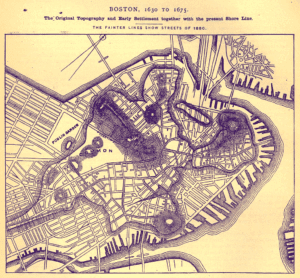
A New Man, A New World
In July of that year, Bridget married Thomas Oliver. And, on the surface, there was a lot of commonality shared between the two. He was also from the Norwich area. He had also lost a spouse. But where he differed from Bridget was that he had been fortunate with his children. He also had a much more storied past in Salem than newcomer Bridget. His first wife, Mary Leman, whom Thomas had married in Norwich, then immigrated with to Salem, along with their two children, was not well-liked. Unfortunately for poor Mary, she was a few decades before her time. She was a vocal supporter of one of the nation’s first prominent Abolitionists and the founder of the Colony of Rhode Island, Roger Williams.
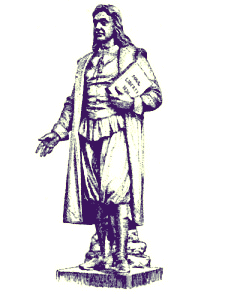
She was also feverishly religiously independent and spoke out publicly against the religious order rapidly gaining a foothold in Salem. For these and other offenses, she was whipped, scorned, and tortured on a number of occasions. At some point before 1648, Thomas had returned to England, the cause of which is unknown. We do know that Mary’s fervent attitude did not sit well within the conservative, highly Puritanical early Salem elite and in 1649, she was banished from the colony and forced to return to England to be with Thomas. There is no record of her leaving New England or arriving in England. But at some point before 1654, Mary was dead.
Bridget Oliver
What we do know is that Thomas Oliver was a savvy real estate entrepreneur and so when he and Bridget were married in 1666, she came more into vastly more wealth than she’d had before. She also became the stepmother to Oliver’s fully-grown children who were still very much around Salem at the time of their arrival. One of these children would potentially become responsible for Bridget’s death, but we’ll get to that later.
Contention | The Heart of Bridget Bishop
Up to this point, we’ve explored Bridget’s past, but not her character. But since you all ultimately know the ending of this story, her arrival to Salem is as good a moment as any to begin laying out some of the reasons that Bridget Bishop ultimately became the first victim in The Salem Witch Trials. Now please understand that what I’m about to say has to be framed within the context of the moment that Bridget lived within, not out own.
You see, it seems that most of what doomed Bridget Bishop was her own character. In this way she is distinct from many other victims of the trials who were seemingly accused for political or social gain. No one gained very much from killing Bridget Bishop, except that her voice was silenced. And why would anyone want that? Well, when it comes to women, it seems Thomas Oliver had a bit of a type.
Bridget was also notoriously difficult, independent, entrepreneurial, self-righteous, and quick to anger. These traits in a man, like say Giles Corey, would have endowed that man with a social status ranging from annoying to admirable. In a woman alive in the 17th century, however, these traits were absolutely deadly.
In addition to her character, Bridget was also known for donning racier clothing than her Puritan counterparts. Now, this could have simply equated to enjoying and being willing to spend money on a wider variety of colors than the standard brown of the age. Still, though, the difference made her attract attention. And a few of the men whose attention she attracted would ultimately cause her murder.
Bridget Bishop’s Second Marriage
Perhaps it’s no surprise, considering what we know of Bridget and Thomas up to this point, that their marriage was fraught with contention. Look at it from both sides.
Bridget was in her mid-thirties (which was not a spring chicken in Puritan America), independently-minded, and desperate to get her footing in this new land and finally begin her life in earnest.
Thomas, who by the way was some 30 years older than his new wife, had seen what this community did to women like Bridget first-hand. He was likely desperate to rein her in, even as her spirit endlessly attracted him.
This push and pull resulted in a lot of fighting. And I mean a lot. So much that neighbors and the courts were frequently drug into their disputes. Mary Ropes, of the world-renowned Ropes family, even recalled seeing Bridget’s face black, blue, and bloodied after one of the couple’s infamous bouts.
No Shrinking Violet
But don’t think Bridget was without fault either. Mary also later recounted that Thomas had confided in her that Bridget had also beaten him on a number of occasions. And, considering what we know of Bridget up to this point and based on the accounts of many later public sightings of mutual violence, this was most likely true.
The marriage did bring something great into the world though. In 1667, Bridget gave birth to a baby girl named Christian Oliver. Christian would be the first of Bridget’s children to survive infancy. This blessing did little to cool the tensions in the Oliver home though. Ten years later, Christian’s parents were both sent to court after a public dispute. They were ordered to stand for an hour back to back in a public marketplace with a paper on their foreheads on which was scrawled their offense. Thomas’ daughter paid for him to escape this fate. Bridget, however, was not spared. The crowd jeered at Bridget Oliver as she stood, bound and gagged with a paper pinned to her forehead. This would not be the last time that 17th century Salemites would cheer at her misery, degradation, and despair.
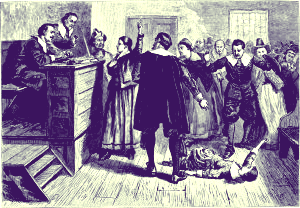
The Rumors of Witchcraft Begin
In the subsequent few years, the rumors that would ultimately lead to Bridget’s neck meeting the rope began. People began reporting seeing Bridget in their dreams, having strange interactions with her in public, and a slew of other mysterious events.
Enter the Stacey Family
One that would go on to have dire implications was with William Stacey. Their relationship began when Bridget visited Stacey as he was wracked by smallpox. The meeting must have gone well, for Stacey professed a great love for Bridget following the interaction. He later claimed that this infatuation was not at all natural.
Once he’d recovered, he decided to repay her visit with one of his own. He did some work for Bridget around the Oliver home. She paid him three pence for his efforts. However, after he left the homestead, the money vanished from his pocket. Stacey, a typical puritan man, told everyone of the strange occurrence. Not one to be a shrinking violet, Bridget confronted Stacey when the rumors ultimately found their way back to her. He admitted to spreading the gossip and dared her to object. She left in uncharacteristic silence. Keep that interaction in mind as we’ll be returning to William and the rest of the Stacey family shortly.
No Country For Free Women
At some point around 1679, Thomas Oliver, Bridget’s second husband, died. He would have been in his late 70’s which was quite a long life for a man of his time. In spite of this, Bridget was accused, even at this time, of having bewitched Oliver to death.
Having left no will, Bridget was made the executor of his estate which included a large home near the meeting house in Salem Town and an adjacent apple orchard, the contemporary location of which is supposedly quite haunted by Bridget’s ghost.
Bridget now had something she’d never enjoyed before: security. The land and everything on it was hers for the rest of her days. Salem Town was booming and she was in the heart of it all. Unfortunately, Oliver’s estate carried with it crushing debt and the following years would see Bridget doing everything she could to manage the encroaching threat bestowed upon her.
Trying to Get By
One such adjustment was transitioning the Oliver home to a sometime tavern, which she began operating soon after his death. There are a number of stories about the fun she had staying up well into the night laughing and playing games with the fellow residents of Salem Town.
Unfortunately, the tavern wasn’t enough to keep up with the debts. For the rest of her life, Bridget would scrape by. A wave of rumors and accusations painting Bridget as a thief began. In 1681 Bridget was forced to sell some of her land to Schoolmaster Daniel Epps. The arrangement between the two was presided over by Justice John Hathorne…
I wonder if Bridget could sense, as she did what she needed to in order to get by, that the man presiding over this particular sale would send her to the gallows merely a decade later? If she could, she showed no signs of it. In the years that followed, Bridget’s strength of character only intensified. As such, the now well-spread accusations of witchcraft and thievery increased. It was also around this time that another victim of the Trials began to be accused as well: Alice Parker. Perhaps the two knew each other? At this point, it’s unclear.
Bridget Bishop’s Third Man
In 1685 Bridget married again to Edward Bishop, a prosperous sawyer living in Salem Town. Unfortunately, little is known about Edward since there were in fact four different Edward Bishops alive around Salem at the time. I like to believe, and there is some evidence to support, that Bridget’s final marriage was a more peaceful and supportive one for her and her daughter. But, again, we don’t know for sure.
What we can say is that to begin their partnership, the newlyweds decided to either entirely tear down or severely renovate the home on the Oliver estate. John Bly and his son William were asked to assist in the effort. The Blys would later claim that during the demolition, they found poppets in the walls of the home.
Poppets were handmade dolls, well-known instruments of the devil at the time. Their presence in the walls was regarded as a sure sign, according to the Salemites of the age, of witchcraft. One should keep in mind, however, that Bridget Bishop was not actually present at the time the house was built – Oliver’s first wife Mary Leman was. So it’s equally, if not more likely, that either she or any of Thomas Oliver’s female children actually stowed the poppets. At any rate, this piece of evidence would later come back to assist in dooming Bridget.
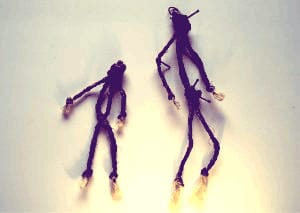
The Descent
The beginning of the end for Bridget centered again around the Stacey family. The elder Stacey, Thomas, ran a mill near Bridget’s home. In the summer of 1687, a piece of the machinery in the mill known as a “mill brass” went missing. By today’s standards, this was just a small, innocuous bearing made of brass. But in 17th century America, it was quite a valuable object to have suddenly disappeared.
So valuable, in fact, that if you ran a mill and one did go missing, you would likely suspect that it had been stolen. And Thomas Stacey did exactly that.
He instructed his son William to run to the local pewterer, Edmund Dolbier, and inform him that the mill brass was gone so that he could be on the look out, should anyone attempt to sell the brass on the market. A month later, Bridget and her now twenty year-old daughter Christian were weeding in their garden when Christian stumbled upon the brass. Christian took the item to the Edmund Dolbier to identify it. Presumably the pair had a mind to return it to its owner, but simply didn’t know what it was. Dolbier then informed the Staceys of the mill brass’ whereabouts.
The Trouble Begins
In December of that same year, the Bishops were brought before the grand jury on suspicion of having stole the mill brass. In court, Thomas Stacey claimed that he had gone to Bridget’s home and confronted the presumed thieves. While there, Bridget supposedly fell to her knees, admitted to the crime, and begged forgiveness. Thomas Stacey claimed Bridget repeated this apology some weeks later at his mill. That was all Justice Stephen Sewall, a nephew of one of the Salem Witch Trials judges Samuel Sewall, needed to hear. He issued an arrest warrant for Bridget Bishop so that a higher authority could try the case.
The Trials of Bridget Bishop
In March of 1688, Bridget stood trial before Justice John Hathorne. She claimed Stacey had never been to her house and she’d never confessed. She had seen him at his mill some time later, but claimed she didn’t confess there either. Hathorne and the court decided a full trial was necessary and issued one to begin in nearby Ipswich. Bridget was to be committed to jail pending her hearing. Fortunately, she was bailed out by Edward and a family friend. Her case in Ipswich was forgotten, dropped, or dismissed, we’re not sure which. But it is clear that the Bishops don’t seem to have suffered any punitive harm from the affair. Unfortunately, this would not be the end of the Stacey and Bishop clash.
In 1690, William Stacey’s daughter Priscella died in infancy. The younger Stacey suspected and was vocal in his suspicion of Bridget Bishop.
The End of the Line for Bridget Bishop
There remains some vagueness about why exactly Bridget Bishop was accused of witchcraft for the final time.
One theory suggests that one of the remaining Oliver children was quite upset about Bridget having inherited their father’s land. And so, through back-channel connections, they ensured that Bridget’s name was on the lips of the accusers. While this certainly sounds plausible, it didn’t actually need to have happened for Bridget to have been accused.
As we’ve covered already, Bridget’s reputation as a thief, harlot, and witch had been established in the region for decades already. And the new accusations, the ones that would lead to The Salem Witch Trials, were also well dug in by the time Bridget Bishop was arrested.
But they began relatively far away from the Bishops. Bridget’s home was in the heart of the urban Salem Town, while the teenage girls that began the accusations were in the adjacent, rural community of Salem Village. Apart from Alice Parker, there’s no indication that any one of the accusers or victims knew Bridget personally before she was accused. But the likelihood that they had heard of her was remarkably high. She was, unfortunately, among a handful of Salem women whose reputations for darkness had proceeded them for decades.
Bridget Bishop’s Arrest
Whatever the case, Bridget Bishop was arrested alongside Mary Warren, Giles Corey, and Abigail Hobbs on April 8th, 1692. She was carted to Salem Village and held in a meeting house overnight. By the time her hearing came the next day, she was entirely astonished, though not surprised I’m sure, by the otherworldly accusations being lobbed against her. Enough “evidence” was found that Bridget was held in captivity and then pushed forward into the actual trials where, again, she knew no one.
Her date in the Court of Oyer and Terminer is one of the most enigmatic in the trials. She held her own, denying claim after claim, dismissing the feverish hysteria around her. She had seen this before and been here before. But she hadn’t been here with these people. Another Salemite’s coat was torn. An accuser seized the opportunity, claiming Bridget’s spirit had ripped it. Bridget denied the claim.
No Way Out
And then a bit of legal argumentation tripped her up. Confused, Bridget attempted to reorient her defense. But the men trying her were too clever, too educated, and too well-versed on what the watchers in the pews wanted to happen. Bridget chose to preserve her dignity rather than admit she had been beaten. The girls raged in her presence, they shouted accusations. Justice John Hathorne spoke up:
John Hathorne:
Do you not see how they are tormented? Why you seem to act witchcraft before us, by the motion of your body, which seems to have influence upon the inflicted.
Bridget Bishop:
I am innocent to a witch. I know not what a witch is.
John Hathorne:
How do you know then, that you are not a witch?
Bridget Bishop:
I do not know what you say.
John Hathorne:
How can you know you are no witch, and yet not know what a witch is?
It’s here that Bridget has a chance to say she simply misspoke, that she doesn’t understand what he means, to fall to her knees and beg for mercy. It’s here that she might, just might have the slenderest chance to save her life. But no. That’s not who Bridget Bishop was.
Bridget Bishop:
I am clear. If I were any such person, you should know it.
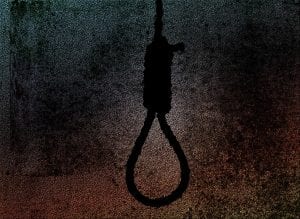
In effect, Bridget basically looked one of the head authorities in The Salem Witch Trials in eye and said plainly, “If I had magical powers, I’d be using them on you right now.” That was all the court needed to hear. After a few final questions, her trial was over. She was returned to the Salem jail.
Bridget Bishop’s Death
On June 10th, 1692, she was led to the gallows. She was the first to be hanged. Unfortunately in the years since, her legacy as one of the brave few who stood up to the court has been overshadowed by others like Giles Corey and John Proctor. This is largely thanks to her characterization by Arthur Miller in The Crucible and other fiction and film writers. Bridget has been relegated to the ranks of the victims whose names we know, but stories we don’t.
When I look at Bridget Bishop’s life, I see a courageous woman who dared to be herself in a time when such an act opposed the burgeoning, fundamentalist mentality of the Puritan colony. I see someone who didn’t break, even when she was tempted to it. I don’t see a martyr or a perfect victim. But I do see someone worth remembering as more than just a somewhat vaguely familiar name connected to The Salem Witch Trials. Bridget Bishop lived a hard life in hard times and paid the ultimate price for it. But in the end, she had her land, she had her family. Far removed from the country of her birth, she had a chance to make something of her life. And she took it. She remains in my mind one of the most inspiring and fascinating victims in the trials and I very much hope you agree.

It makes me wanna know more about Bridget bishop’s life, activities… I love digging out the past tales, as we call them in the present..
What does it take to be one😁
I completely feel you Lynne. The more I learn about these players in the Salem Witch Trials, the more fascinated I become with what their life must have been like. It was a truly terrifying, exciting, tense time to be alive.
What an incredibly sad and tragic story.
She was a brave, spirited, defiant and reasonably intelligent woman.
It is a travesty that personal acrimony, resentment and vengeance led to the unnecessary challenges in her life, and also to her death.
Rest in peace Bridget and all the other victims who spoke up against the vile witch hunts.
I’m a descendent of her third husband Edward Bishop. While not blood related I always thought it was really cool to say Bridget Bishop was in my family tree when we would cover the Salem Witch Trials in school. I always say she sounds like my type of person, defiant to the end.
I really want to go to Salem to visit. I know it’s quite commercialized but I’d still like to see the memorial stone of hers. I believe she probably was an outspoken woman who was a property owner and that was very unusual for the times. That lead to her being accused. There’s been some questioning that the attributes of wearing red and being a tavern owner might be mistaken for her stepdaughter, Sarah Bishop. She was married to Edward Bishop II who was a tavern owner. Both Sarah & Edward II were also accused of witchcraft but escaped.
What I always wonder and I’ve never seen covered in any reports is what her husband did. He wasn’t accused of witchcraft. Did he try to help her at all? Then his son and daughter-in-law also were accused, did he help them? Is that how they were able to escape? All of it is so interesting.
I’ve been interested in Bridget and Edward Bishop and the role they may have played in the innovative design of the sawyer board cane. I collect these canes which are essentially walking sticks with board tables engraved on them. Board tables are used to determine board-feet in finished lumber and paper ones have been around as long as the mills. At some point in colonial times, board scales were engraved on a walking stick. I recently found a really old one in New York that was coveted by a collector before he passed away. Nothing of its history was found. It may have been owned by a sawyer operating in Salem in 1691/92. The date is hidden with an ingenious riddle. The creator was apparently impressed with the witch trials because there’s a tiny gallows symbol on the stick. The board table was hand stamped – not a common practice because forcibly hammer punching numbers on a relatively thin walking stick would risk damage. But here’s the real kicker: the stick has brass accents. One piece of brass near the head tested (via XRF) as low zinc brass. This is from the pre-industrial period, before modern brass alloy with 30% zinc was feasible. In other words, the date from the riddle is consistent with the alloy. In addition, when some tin is added to the brass it becomes more durable and corrosion resistant. This ‘tin brass’ was commonly used in mill bearings of the day. My theory is Bridget Bishop was married to a prosperous but aging sawyer, Edward, who would have used a board table in his grading of lumber. He would have frequented sawmills. Some observations of Edward’s demeanor during his wife’s trial was that he appeared elderly and he may have had difficulty getting around without a cane. Edward and Bridget Bishop may have invented the very first board cane, consolidating a board table with a walking stick. The mill brass was desired to dress it out and the brass bearing was of similar diameter to the stick so recasting was not necessary. The incident of the stolen mill brass in 1687 could have simply been Bridget’s failed attempt to obtain the part Edward desired to finish the board cane. Maybe there was a revelation that using a worn out bearing could work just as well as a new one. Edward could have finished stamping the wood shaft following Bridget’s execution using the same number stamping set he could had used to stamp the lumber he graded. The reason for the hidden date may be explained if the stick was finished after the tribunal was dissolved by Governor Phips on or around October 1692 and his gag order could have given anyone pause who wanted to memorialize the hangings. Again, it’s a theory but it checks allot of boxes. Facts: The mill brass alloy could coincide with the period of the Salem witch trials and supports the date in the riddle. I believe it’s the earliest board cane known and may be the original. The hanging symbol can’t be ignored. The big question is, who made it? Someone who may have known someone who was hanged, someone who was a sawyer, and someone who would have benefited from the invention. We may never know who made it for sure, but when looking at all the victims there are allot of coincidences with Bridget and Edward Bishop.